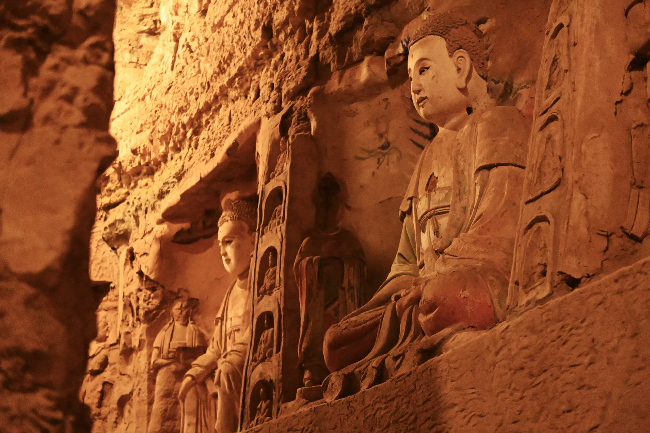Exploring the rich Buddhist heritage of the grottoes corridor in Jingchuan

Statues in the Wangmu Palace Grotto within the so called 50-kilometer-long grottoes corridor in Jingchuan county, Pingliang, Gansu province [Photo provided to gogansu.com]
The Chinese province of Gansu is renowned for its rich cultural heritage, and the county of Jingchuan, located in the city of Pingliang, is no exception.
Since ancient times, Jingchuan has served as the first major town leading towards the Western Regions. This strategic location has resulted in a unique blend of cultures, including a significant presence of Buddhism.
Jingchuan is considered one of the earliest regions in China to embrace Buddhism. This legacy is evident in the impressive collection of Buddhist cultural relics found throughout the county, most notably within the so called 50-kilometer-long grottoes corridor. This remarkable complex comprises 512 individual grottoes.
Among the most prominent grotto groups are Wangmu Palace, Phoenix Mountain, Nan Shiku Temple, Zhangba Temple, Luohan Grotto, and Taishan Temple. These grand sites are complemented by numerous smaller grotto groups, each contributing to the rich tapestry of Buddhist art and architecture found in Jingchuan.
The grottoes corridor stands as a testament to the profound influence of Buddhism on Jingchuan and its surrounding region. These Grottoes offer not only artistic and architectural marvels but also invaluable insights into the religious history and cultural exchanges that have shaped this corner of China.





 Print
Print Mail
Mail
